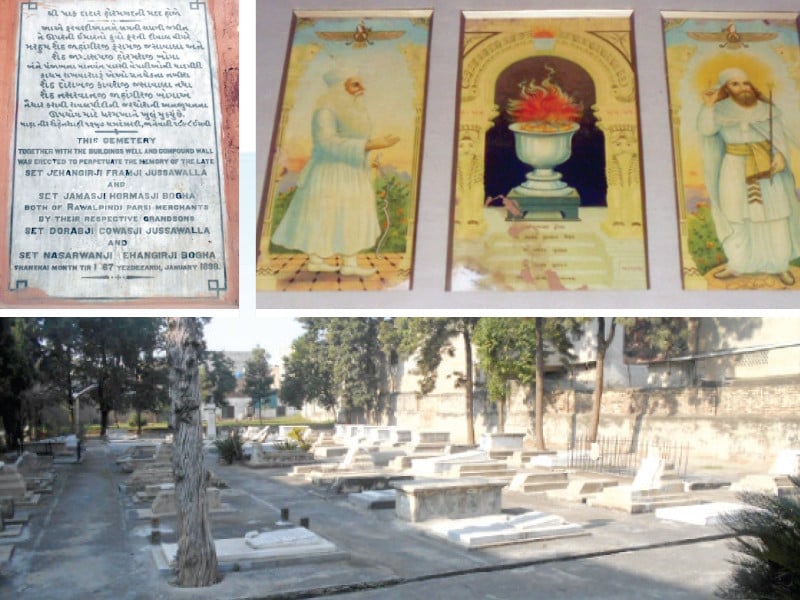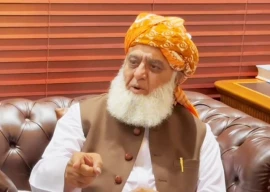
Rawalpindi, a city with a rich history spanning over centuries is home to numerous ancient landmarks that narrate tales of its past.
Among these is the Parsi cemetery, located behind the bustling jewellery market on Murree Road, also known as Souq Idris. This cemetery, which dates back to 1890, stands as a testament to the city's diverse cultural and religious heritage, and it is the only Parsi cemetery in Rawalpindi built according to a formal plan.
The cemetery, established by Seth Dorabji Kausji Jussawalla and Seth Naservanji Jehangirji Bogha Shahsai, was created in memory of their ancestors, Jehangirji Framji Jussawalla and Seth Homasji Hormasji Bogha. Before its official establishment in 1890, the site only contained temporary graves and was not recognised as a formal cemetery. Today, it houses 130 graves, each constructed of stone and bearing inscriptions in both English and Gujarati. The oldest grave dates back to 1860, and the cemetery features marble mausoleums that add to its architectural splendour.
In contrast to the vibrant jewellery market that now occupies the front of the cemetery, the cemetery itself is a serene and well-maintained space. Towering palm and date trees provide shade, while a deep well, dug over a century ago, remains functional, its water still usable. The cemetery is regularly cleaned and maintained by a dedicated gardener and watchman, both of whom have been permanent residents for years.
Daily cleaning ensures that the cemetery remains free of wild weeds and self-seeding plants, with only flowers, palms, date palms, and other shade trees allowed to grow.
The cemetery's entrance from Murree Road is small and unassuming, with inscriptions in English and Gujarati. To the casual passerby, it might be surprising to learn that such a vast area is hidden behind the modest gate. The cemetery's rear borders the old Sikh settlement area of Kartarpura, further encapsulating its historical significance.
One of the most striking features of the cemetery is its Roman-style funeral building, a masterpiece of architecture that can accommodate up to 200 people. The building's porticos and corridors are adorned with inscriptions and images of the founder of the Zoroastrian religion, adding a spiritual and cultural depth to the site.
Historically, the Parsi community in Rawalpindi was known for its peaceful nature and significant contributions to the city's development. The Parsis, of Iranian descent, arrived in Rawalpindi in 1849 following the establishment of a British cantonment. By 1893, the community had become well-integrated, with Parsi Dhanji Bhai being appointed as the first First Class Magistrate. In 1895, he established a large public library at Massey Gate Saddar, which served the community for 80 years before being converted into a mall plaza.
Before the partition of the subcontinent, there were about 80 Parsi families in Rawalpindi, all affluent and educated, playing pivotal roles in the city's trade and development. However, after the partition, most of these families moved to India, Iran, and Karachi, leaving only seven Parsi families in Rawalpindi.
Today, the cemetery is managed by Asfin Bhandara, the current caretaker, and president of the Anjuman Pasian. Asfinyar Bhandara, who regularly visits the cemetery, is committed to its preservation and protection. He has expressed concerns about the valuable land being at risk from land mafias, despite its status as an ancient heritage site.
The Parsi Cemetery, with its rich history and cultural significance, stands as a reminder of the city's diverse past. However, its future remains uncertain, and there is a growing need for the Department of Archaeology to step in and protect this ancient heritage from encroachment and neglect.

1721390241-0/BeFunky-collage-(20)1721390241-0-405x300.webp)
















COMMENTS
Comments are moderated and generally will be posted if they are on-topic and not abusive.
For more information, please see our Comments FAQ